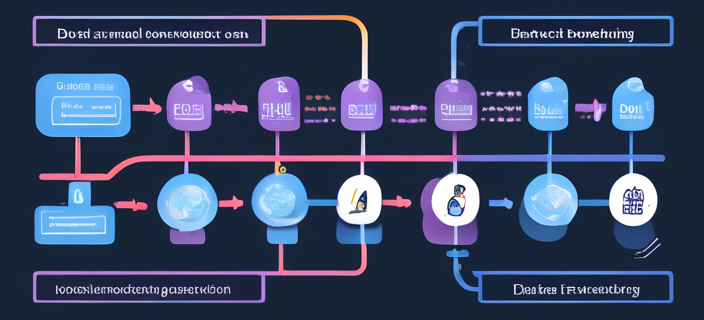An in-depth look at the transformative potential of generative AI and the critical steps for effective implementation.
Generative AI stands at the forefront of a technological revolution, promising to inject an estimated $2.6 trillion to $4.4 trillion annually into the global economy. This staggering potential stems from its ability to enhance efficiencies, improve customer experiences, and spawn innovative products across various sectors. However, realizing this potential hinges on overcoming significant challenges in data management, system scaling, and sustainable funding.
The Foundation of Generative AI: Data
 A visual representation of the diverse data types fueling generative AI.
A visual representation of the diverse data types fueling generative AI.
At the heart of generative AI’s capabilities lies data. The technology’s power to understand, analyze, and interact with the world is directly tied to the quality and organization of the data it processes. Data comes in several forms, each contributing uniquely to the richness of generative AI insights:
- Structured Data: Organized and consistent, providing a solid foundation for AI projects.
- External Data Sources: Offering real-time context from the outside world, such as weather reports or stock prices.
- Derived Data: Generated through analysis, offering deeper insights like customer intent reports.
- Unstructured Data: Encompassing human expressions through images, documents, and audio files, adding nuance to AI models.
“To succeed with generative AI, your company will need to manage and prepare its data well.”
Scaling Generative AI
The challenge of making diverse data sets accessible in real-time is paramount for generative AI projects. This requires a scalable and globally replicable data infrastructure to minimize downtime and latency. Preparing data for generative AI involves creating embeddings—mathematical representations that allow the AI to grasp the semantic meaning beyond mere text matches. This preparation is crucial for enabling effective vector or hybrid searches across data, enhancing the AI’s ability to deliver accurate results.
 Conceptual visualization of data preparation for generative AI through embeddings and vector search.
Conceptual visualization of data preparation for generative AI through embeddings and vector search.
A Modular Approach to Implementation
Adopting a modular approach to generative AI development offers several advantages, including improved explainability and security. By compartmentalizing components, organizations can better analyze and protect their AI systems, ensuring only authorized access to sensitive data and functionalities. This approach also facilitates compliance and governance, particularly in handling personally identifiable information (PII) and intellectual property (IP).
Funding the Generative AI Journey
Transitioning from traditional project-based funding models to a platform mindset is essential for sustaining generative AI initiatives. This approach allows for more flexible and value-based decision-making, encouraging a culture of shared expertise and collaboration. Viewing generative AI as a product rather than mere software can further align resources and support towards integration and development, fostering a more widespread adoption of best practices.
Generative AI harbors immense potential to reshape industries and economies. However, unlocking this potential requires meticulous data management, scalable infrastructure, and innovative funding strategies. By addressing these challenges head-on, organizations can position themselves to fully leverage the transformative power of generative AI, paving the way for a future where technology and human ingenuity converge to create unprecedented value.















